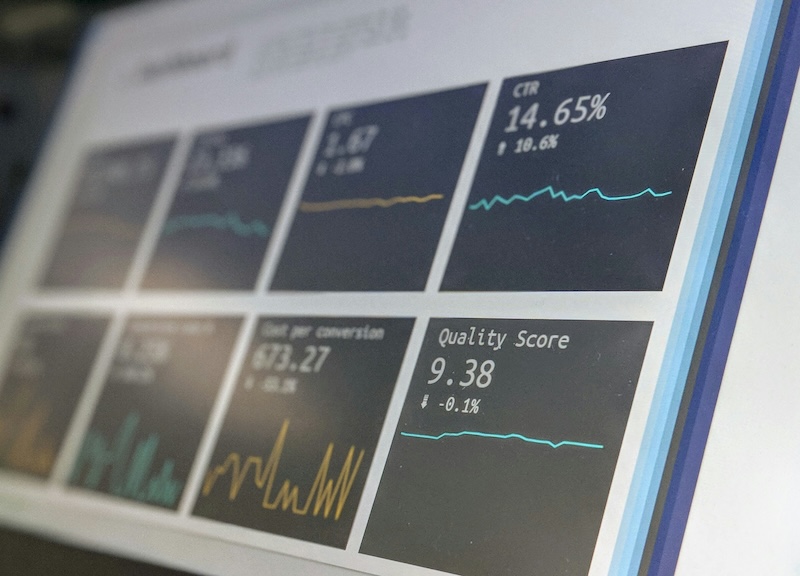When investing in short-term rental property, it’s crucial to understand your return on investment (ROI). ROI helps you assess profitability over time, measuring how effectively your property generates income relative to its cost, and providing a clear picture of an investment’s potential success. Understanding your ROI allows for smarter decision-making and better financial planning, ensuring your property aligns with your long-term investment strategy and revenue goals.
In this article, we’ll take you through a few surprisingly intuitive ways to measure the ROI on your vacation rental properties. You can use these metrics to gain key insights into how to adapt your rental strategy, and maximize your revenue.
Let’s start with the basics:
How to calculate ROI
ROI is a fairly straightforward formula to understand, when you break it down. It is a measure of profitability relative to time.
ROI is expressed as a percentage that represents the proportion of your investment that the property generates in profit, per unit of time (which is typically per year).
The basic calculation involves subtracting the property’s annual expenses from its annual income, dividing the result by your total investment cost, and multiplying by 100.
Here’s the simplified formula to calculate ROI for your vacation rental business:
ROI = ((Rental income – Expenses) / Total investment) x 100
Let’s say your annual profit (income minus expenses) equals half of what you invested in the property. That would give you a 50% ROI—meaning you’d recoup your investment in just two years. Pretty impressive, right?
Now, what kind of ROI should you actually aim for?
What is a good ROI for a vacation rental property?
This is the big question. As with most big questions, there isn’t a single, simple answer; but in the interest of helping you make informed decisions, we’ll try to give you one.
A good ROI for vacation rental properties typically falls between 8% and 12%.
This, of course, depends on location, demand, and operational efficiency. However, aiming for an ROI above 15% is considered strong in the industry. The 8% to 12% zone is a balanced middle ground—robust enough to generate cash flow, but high enough to indicate the risk of a non-sustainable business.
It’s helpful to remind yourself that ROI isn’t solely about how much revenue you can generate, but also how reliably you can earn it.
There’s no doubt about it; 8% to 12% is a solid ROI, but we encourage you to be mindful of where your priorities lie. Think about whether you value stability, or upside potential. Low maintenance, or hands-on? Once you have a clear idea of how you want to manage your vacation rental strategy, you’ll have a better idea of what sort of ROI to aim for.

Different ways to measure ROI
There are several metrics you can use to assess your property’s performance. Each represents a different way of looking at the same situation, and each has a different advantage.
They can be useful to measure different types of performance, and can be used to inform your rental strategy.
Let’s take a look:
Gross Yield
What is it? Yield gives you a quick look at your rental property’s income potential, without considering taxes and expenses.
Formula: Yield = (Rental income ÷ Property price) × 100
How can I use it? Yield is a handy metric for quick filtering, allowing you to screen potential deals at the early stages – just don’t forget to keep expenses in mind.
Net Operating Income (NOI)
What is it? NOI shows you how much income a property generates after covering operating expenses such as insurance, utilities, and maintenance.
Formula: NOI = Rental income – Operational expenses
How can I use it? It offers a reliable baseline for comparing different properties or assessing profitability, regardless of your financing method.
Cap Rate
What is it? The cap rate shows you how effectively your property converts the purchasing price into income. It’s especially valuable when you need a ROI metric that’s independent of market conditions and financing methods.
Formula: Cap rate = (NOI ÷ Property price) × 100
How can I use it? The cap rate is useful for comparing properties across various markets.
Cash-on-Cash Return (CoC)
What is it? CoC measures how effectively your out-of-pocket investment is generating profit. It’s particularly useful when the property is financed.
Formula: CoC = (Pre-tax cash flow ÷ Total cash invested) × 100
How can I use it? To evaluate how hard your invested cash is working, and inform your future investment strategy.
Smart property managers track all of these metrics, and use each of them where it is the most appropriate to inform their investment strategy.
Let data drive your investments: Use Rental United’s Elevate to easily track metrics.
What influencing factors can impact vacation rental ROI?
ROI is more than a number—it’s a reflection of your strategy within its market conditions. Here are three things to consider while setting your ROI targets:
Risk tolerance
Big returns usually come with big swings. High-yield properties in highly seasonal or unregulated markets might look great on paper, but they can bring surprises—like vacancies during the off-season or rule changes that limit your rental nights.
Lower-yield markets, on the other hand, often offer more consistency. You might earn slightly less, but if bookings are steady year-round and local laws support STRs, you’re more likely to hit your targets over time.
Regulations
Short-term rental rules can make or break your earning potential, and sometimes new regulations can arise with little warning. Some cities have introduced STR bans in certain zones, limit how many nights a year you can rent, or require expensive permits.
A good ROI only matters if you’re allowed to earn it consistently, so before investing, always check if there is anything that might limit your earning potential, such as the availability of year-round renting, or whether you need to use the property as your primary residence.

Local demand and seasonality
Short-term rental income is driven by occupancy and pricing. A home that books frequently at moderate rates may outperform one with a high ADR (average daily rate), but sits empty more often. The best ROI happens when both numbers work in your favor.
RevPAR (Revenue per Available Rental) is a helpful metric here. It accounts for both ADR and occupancy to show average income per day available. If RevPAR trends are rising in a market, that’s a strong signal of growth potential—even if current yields are modest.
How to increase the ROI for your vacation rental property
You might already have a good thing going, but remember that making intelligent tweaks to your rental strategy can help your ROI climb over time.
To improve your ROI, consider these four tactics.
- Optimize pricing: Use dynamic rate plans to maximize occupancy and revenue potential.
- Minimize vacancies: Take advantage of special pricing adjustments and last-minute deals to fill empty dates.
- Enhance guest experience: Offering value-added services, such as unique local experiences or premium amenities, can justify higher pricing and attract higher-paying guests.
- Reduce operational costs: Leverage tools like Rentals United’s Channel Manager to automate processes and reduce manual tasks.
In simple terms, your ROI will improve when you earn more and spend less. There are lots of things you can do to start making a measurable difference.

Adjust your ADR’s based on local and seasonal demand, and encourage longer stays to boost occupancy and reduce turnover expenses. Rentals United’s Channel Manager is a great tool for setting variable rates across your whole portfolio of properties, and allows you to manage simultaneous listings across more than 90 channels through its Unified Inbox. It can also help you automate guest messaging which not only saves you valuable time, but ensures consistency, and immediate responses that ultimately means high guest satisfaction and positive reviews that–you guessed it–leads to more bookings and higher conversion rates.
Run your rental efficiently by staying on top of maintenance requirements, and always have a contingency plan to reduce the risk of expensive ‘unforeseen circumstances’.
Implementing these simple habits is good management practice, all of which leads to a higher ROI and more revenue for you. Of course, every market and property is different, but consistent attention to the basics—income, occupancy, expenses, and guest experience—goes a long way!
Conclusion
For short-term vacation rentals, aiming for 8% to 12% is a strong place to start.
From there, it’s all about aligning your strategy with your goals. Track a variety of metrics for a more complete view on your investment–some investors chase high returns and manage hands-on. Others value peace of mind, even if it means slightly lower profits. There’s no right or wrong, just make sure that your strategy works for your personal management style.
Remember: The best investments aren’t just good on paper—they actually work in practice.
See how Rental United’s Channel Manager can help you measurably boost your ROI.